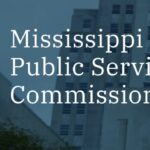Facts about the Limited Public Service Loan Forgiveness Waiver
By: Charlestien Harris
Student loan debt is one of the reasons some potential homebuyers can’t afford a mortgage. It is among the factors lenders look at when they consider you for a home loan, because your student loan debt can influence your debt-to-income ratio.
One way to reduce your student loan debt is to consider applying for the new Limited Public Service Loan Forgiveness (PSLF) Waiver. The Biden administration revamped the PSLF Program in October 2021, and the deadline to apply for this limited waiver is Oct. 1, 2022. The U.S. Department of Education has projected that these new guidelines have the potential to forgive the balances of 22,000 loan borrowers.
Here are the facts about the new rules, who qualifies, and how to apply for the program.
- Log in or create an account. The steps required to take advantage of the limited PSLF waiver depend on whether you have Direct, Family Federal Education Loan (FFEL), or Perkins Loans, as well as your history with PSLF. Start by logging into your account at www.studentaid.gov using your FSA ID, and then review your Aid Summary to see what types of loans you have.
TIP: If you do not have an account already, you should create one to monitor your student loans.
- Qualify your employer. If you work or have worked in public service such as through government service (federal, U.S. Military, state, local, or tribal) or certain nonprofit organizations, you might be eligible for the Limited Public Service Loan Forgiveness program.
- Full-time employment is required. You must meet your employer’s definition of full-time. However, for PSLF purposes, that definition must be at least an annual average of 30 hours per week. For the purposes of PSLF, eligible not-for-profit organizations include those that are tax exempt under section 501(c)(3) of the Internal Revenue Code (IRC), or other not-for-profit organizations that provide a qualifying service. Qualifying employment could include:
- emergency management
- military service
- public safety law enforcement
- public interest law services
- early childhood education
- public service for individuals with disabilities and the elderly
- public health (including nurses, nurse practitioners, nurses in a clinical setting, and full-time professionals engaged in health care practitioner occupations, health support occupations, and counselors, social workers, and other community and social service specialist occupations; as defined by the Bureau of Labor Statistics)
- public or school-based library services
- The remaining balance is not taxable. The Public Service Loan Forgiveness program will forgive your remaining loan balance after you make 120 qualifying monthly payments while working for a qualifying public service employer. You won’t pay income taxes on the amount you’re forgiven.
- Use the help tool. The U.S. Department of Education has developed a help tool for the PSLF program. This tool is intended to help you: understand more about the PSLF program and what is needed to participate and possibly have loans forgiven; assess whether an employer qualifies for PSLF; assess whether loans qualify for PSLF; complete the PSLF form; and determine other actions you should or must take to receive PSLF. You can access the tool at www.studentaid.gov/pslf.
- Follow-up with your servicer. Once you submit the PSLF form, your servicer knows you are interested and can track your progress. The company that services your loan may change. Pay close attention to any information you receive about your student loan, even if it’s from an unfamiliar company.
- Keep track of your payment total. The PSLF help tool helps you stay on track to 120 qualifying payments. Each time you submit your PSLF certification form, you will receive a count of the number of qualifying payments you have made. Make sure it matches your records. You do not have to make the 120 qualifying payments consecutively. Unfortunately, only payments made after Oct. 1, 2007, can count as qualifying payments, since that’s when the original PSLF program began.
- Enroll in a qualifying payment plan. You must make those payments under a qualifying repayment plan. To maximize your temporary PSLF benefit, repay your loans on the Income-Based Repayment (IBR) Plan, the Pay As You Earn Repayment Plan (PAYE), or the Income Contingent Repayment (ICR) Plan, which are three repayment plans that qualify for PSLF. Under the PSLF Limited Waiver opportunity, most of the PSLF qualifying payment rules have been suspended through Oct. 31, 2022. Under this temporary waiver, you may get credit for payments you’ve made on loans that would not normally qualify for PSLF. These payments will count even if you didn’t pay the full amount or on-time.
As a housing counselor, I am encouraging you to take a look at this limited PSLF wavier program. Remember – the Oct. 31 deadline of is fast approaching! Go to www.studentaid.gov for additional information.
If you are looking to purchase a home, stop by a Southern Bancorp branch near you and we’ll be happy to help you down the path to homeownership, no matter your current financial position. To find a location near you, go to www.banksouthern.com.
For more information on this and other financial topics, call me at 662-624-5776 or email me at Charlestien.harris@southernpartners.org.
Until next week — stay financially fit!
Charlestien Harris is a financial contributor to DeSoto County News. She is a financial expert with Southern Bancorp Community Partners whose articles are seen in a number of publications around the region. You’ll be seeing her columns weekly on the DeSoto County News website and our social media channels.






